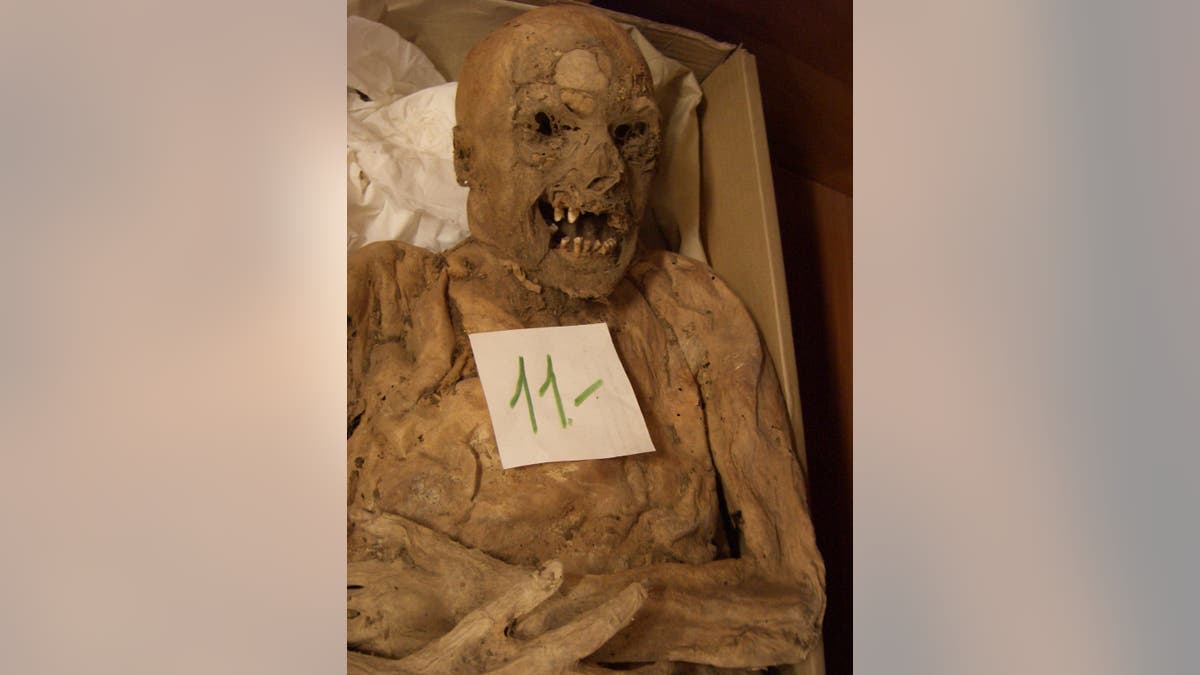
A Hungarian mummy's genes is helping scientists better understand the causes of colorrectal cancer. (Tel Aviv University)
Mummies have long offered up a wealth of medical information, from the role that diet plays in heart disease to the ancient origins of tuberculosis.
Now, a new PLOS One study of 18th century Hungarian mummies concludes that a genetic predisposition to colorectal cancer preceded the advent of modernization. If confirmed, that would mean the role of processed food, physical inactivity and other factors that were not commonplace back then may not play as important of a role in causing the cancer as previously thought.
“Colorectal cancer is among the most common health hazards of modern times,” Rina Rosin-Arbesfeld of Tel Aviv University’s (TAU) Department of Clinical Microbiology and Immunology and a co-author of the study in PLOS One, said in a statement. “And it has a proven genetic background. We wanted to discover whether people in the past carried the APC mutation — how common it was, and whether it was the same mutation known to us today. In other words: Is the increase in the incidence of cancer the result of man's manipulation of nature alone?"
Related: 1,300-year-old Egyptian mummy had tattoo of Archangel Michael
In 1995, more than 265 mummies were excavated from sealed crypts in the Dominican church in Vác, Hungary, researchers said. These crypts were used from 1731 to 1838 for the burial of middle-class families and clerics and provided ideal conditions for the natural mummification of corpses — low temperatures, constant ventilation, and low humidity.
Some 70 percent of the bodies found had been completely or partially mummified, providing a rich source of preserved tissue samples and archival information for researchers. They are now housed at the Hungarian Natural History Museum in Budapest.
After hearing last year that tuberculosis had been discovered in 18th century Hungarian mummies, Rosin-Arbsefeld said she became “interested in seeking out a number of gene mutations known to be associated with colorectal cancer.”
Related: Mummy mask papyrus may reveal oldest-known gospel
In the TB study in Nature Communications and led by researchers at the University of Warwick in the United Kingdom, the mummies yielded 14 tuberculosis genomes - suggesting that mixed infections were common when TB was at peak prevalence in Europe.
The team used the 18th century sequences to date the origin of the lineage of TB strains commonly found in Europe and America to the late Roman period, which mirrors controversial theories that the most recent common ancestor of all TB strains occurred as recently as 6,000 years ago.
In the latest case, the researchers took 51 samples from 20 Hungarian mummies and used genetic sequencing to identify mutations in APC genes in a sample of large intestine tissue that were isolated from the mummies.
Related: 1,000 year-old mummified monk reveals more of his secrets
“Our data reveal that one of the mummies may have had a cancer mutation. This means that a genetic predisposition to cancer may have already existed in the pre-modern era,” TAU’s Ella H. Sklan, another co-author, said. “But we’ve found this mutation in only one individual so far. Additional studies with a larger sample size should be conducted in order to draw more meaningful conclusions.”
Having the soft tissue was critical because it “carries evidence of disease,” TAU’s Israel Hershkovitz, another co-author on the study, said.
“Very few diseases attack the skeleton, but soft tissue carries evidence of disease,” he said. “It presents an ideal opportunity to carry out a detailed genetic analysis and test for a wide variety of pathogens.”




















